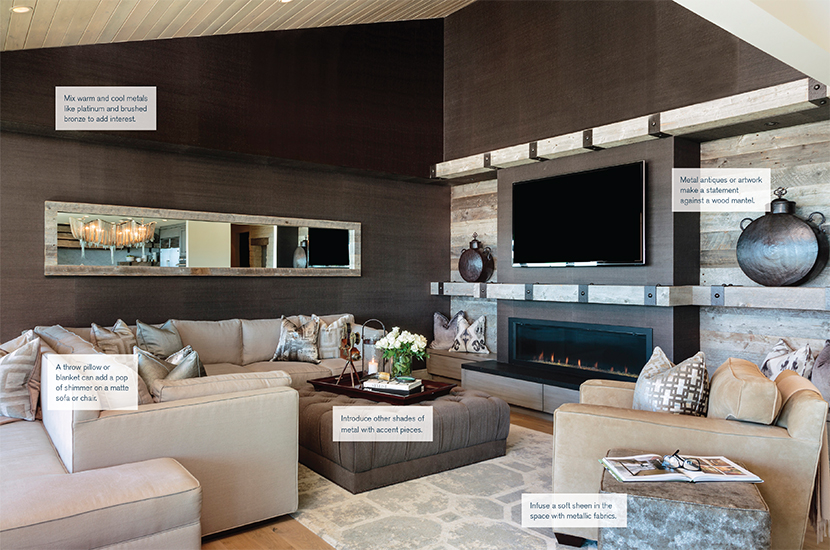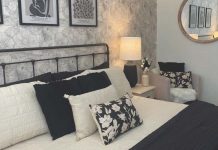By Meryl Schoenbaum
For decades, the worlds of fashion and interior design had the same philosophy regarding accessories: Don’t mix your metals. But today’s designers know better—not only do they approve of combining metals, they encourage it.
Quin Palmer Brotherton, senior designer at Bliss Home & Design in Corona del Mar, styles her clients’ homes with a variety of metal elements in each room, but she adds that there is an art to achieving the desired result.
“Mixing metals is a great way to add interest and dimension. If you do it right, your space will look collected over time rather than too matchy,” Brotherton says. “The best part of a home is a space that feels collected in an organic, natural way … . Not everything has to match in finish and tone.”
In fashion, certain metals look better against warm or cool skin tones; a similar philosophy holds true with decor.
“Depending on whether your room has cool or warm tones, use contrasting metals,” Brotherton advises. “If your room has cool tones, such as grays and blues, add contrast with warmer metals, such as oil-rubbed bronze, antique gold or antique brass. For warm-toned rooms with orange, red and yellow, use cool-toned metals, such as polished silver, steel and black iron.”

According to interior designer and author Barclay Butera of Barclay Butera Interiors in Newport Beach, “Decorating with metals adds light and an ethereal quality to any room design. When you use grainy rustic woods, metals of all shades, from silvers to brushed bronzes and everything in-between, … will add a touch of glamour to the space and give it an instant lift,” he says. “Metallic accessories like vases, trays and barware brighten up dark corners of a room. And nothing creates instant glamour better than a metallic light fixture or chandelier. It’s like jewelry for the home.”
Specific rooms also come with their own set of rules to follow. In the kitchen, for instance, Brotherton suggests pairing gray or white cabinets with antique gold or a dark iron.
“In bathrooms, mix polished-nickel faucets and shower fixtures with antique gold sconces or antique brass mirrors. In living rooms and bedrooms, my clients are into the gray, neutral tones, so to brighten those rooms I’d add antique brass or gold accessories. If your bedroom is blue and you want to go traditional, then mix silver tones and brushed-nickel with dark iron tones for a classic look. Iron elements could be bed or drapery hardware that ties in with the door hardware and handles. Add contrast with a lamp in silver or gold, or a mirror or art frame.”
Another tip, Brotherton says, is to keep the door and drapery hardware cohesive and reserve the mixed metals for accent pieces, such as a pair of lamps and art frames. You can go the cohesive route with some metals, but mix others when selecting a few decorative items. “The goal with mixing metals is to create interest and pop,” Brotherton says. “Your eye won’t go to it if it blends in too much.”
In the end, what matters most is finding your favorite pieces that combine to make each room shine. NBM




